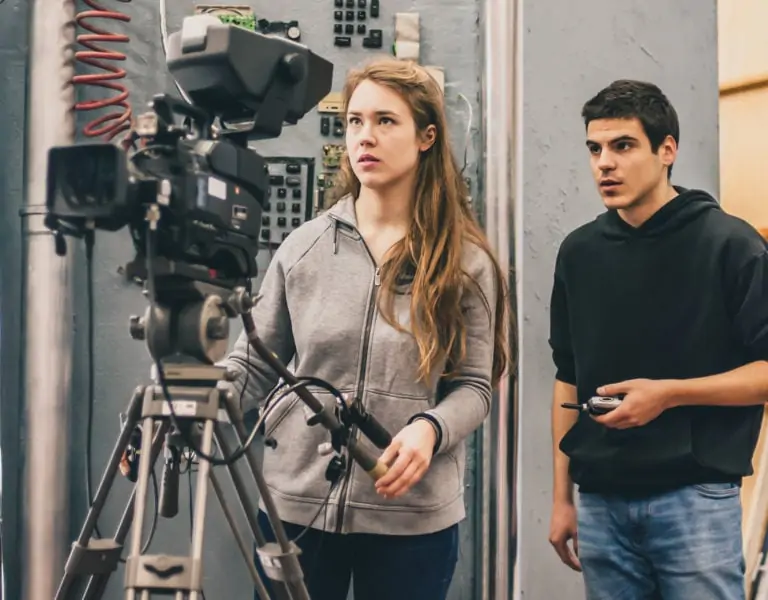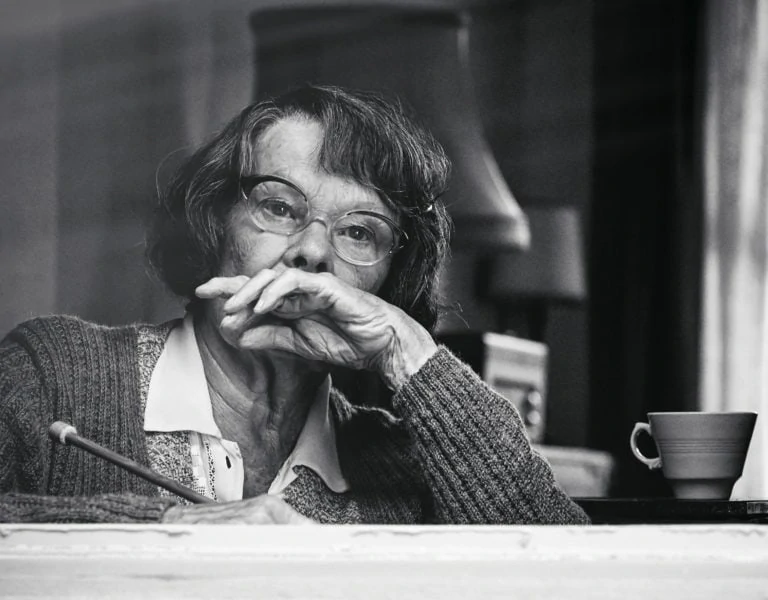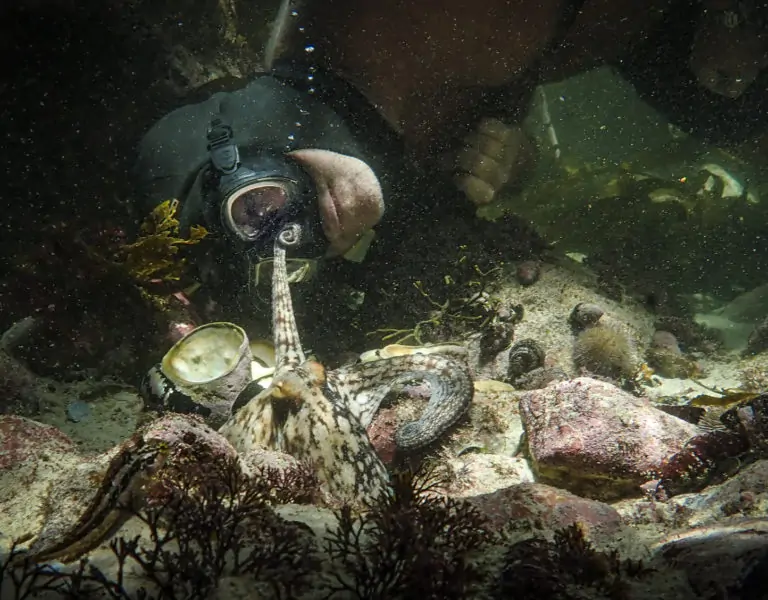COULD JOB SHARING WORK FOR YOU?
Sometimes, through adversity, some interesting ideas can develop and flourish. The past two years have given people time to think, re-evaluate certain aspects of their lives, and changed them in one form or other. The work-life balance of the business can sometimes be rather trying.
The GBCT drew my attention to the idea of job sharing in certain areas of technician work. There are several men and women who have over the years developed how job sharing can work for them. I was interested to know more.
At first, without any further knowledge, I couldn’t work out how this could work on a long drama series or movie, as consistency and stability is paramount to the efficiency on a set. Do they work three days on then three days off, or a week off and on? What was the arrangement? How does a proper handover occur? How does the pay work? I was intrigued, so we set up a call.
I spoke to Kim Vinegrad GBCT, a very experienced focus puller who is in the midst of moving into being a full-time camera operator and who worked out a job share on a series with another Guild focus puller, Kirsten De Maid. It was clear after I spoke about the idea with Kim for a few minutes that this could work for many other people in similar circumstances.
Kim and Kirsten had realised the home circumstances with young children were sometimes testing, whereas a block of four weeks working and then four weeks off made it easier to plan life and gave more energy when back on set. It gave a set end time to a shooting block, so the work had a defined start and end. Some quality family time was taken, then back after four weeks to the set feeling chirpy and with more energy. It means more contact with their children, along with the ability to plan life.
During the call it became obvious this arrangement suited some grades better than others, of course. Changing a skilled operator, for example, may affect the composition and style of the shots. A DP swap over like this would be a very difficult sell. It also has pluses and minuses, yet it is an option as long as everyone is happy with the situation.
Kim approached line producer David Wade and Danny Cohen BSC. Here is David’s view on how it went: “I recently had the pleasure of working with Kim Vinegrad and Kirsten De Maid on a HETV show for the BBC and Element Pictures. I was the Line producer on the show, our DP was Danny Cohen, and the director was Shane Meadows.
“Kim was highly recommended to me via a colleague, Danny signed off on bringing Kim on board to pull for him due to her expertise and Kim asked due to family commitments would we be open to having a job share situation with her and another female 1st AC. It’s the first time it’s been asked of me, and we had no hesitation in exploring this. Kim and I discussed it, as did Danny and I, and we signed off on it.
“The ladies very simply did one month on and one month off over the three-month shoot. I can honestly say doing it this way made no difference to production on an operational level at all. It ran as smoothly as having one person for the whole shoot. Both ladies are extremely skilled at their jobs, and they were both a pleasure to work with.
“I’m glad we could work this way as it meant we got to work with two very talented ladies instead of one and they could have a better work-life balance. Some people want to/need to work and have a balance of spending time with their young children. This is the way forward and we should be open to it in our industry. I’m extremely glad we could as employers help facilitate this. I would have no hesitation in setting up a shoot like this again.”
This production worked well, and I also understand it will not work for everyone, yet the positives often outweigh the minuses.
Clearly the people who are sharing need to be at a similar level of experience and have similar situations outside of work. Ideally, they are friends already, as they need to be able to discuss the shoot around the swap over time, also during the time before the swap over. Kim said she was available for a call at any point when she was not working. She could be planning ahead for some areas of her section, so the transitions were always seamless due to the planning ahead. This concept does not mean it is completely hands off when not working, and I wouldn’t expect it to be in this situation and level.
As Kim says, 16 weeks shooting is a long time to be away, yet four weeks is a manageable chunk of time, and near the end she was looking forward to the time off, yet also looking forward to getting back on the shoot when on the break!
Playing devil’s advocate, I asked a simple question about how the end credits on a film would work. It was simply a case of both being credited, or if it were a single episode then the individual would be credited. This happens with screenwriters and episode crew and directors, so it was a minor point.
Also, it can only really work when the business is relatively buoyant, and the shoots are many weeks at a time. Effectively taking a pay cut by working half the time may not suit everyone, particularly when the business is quiet.
Whilst in this case both technicians happen to be women, this should not be a barrier to others to exploring this as an option and should be open to all who like the idea and can work it around their specific circumstances. Pairings of people, when suggested, should not be limited to anything other than ability levels, grades, and desire and reasons to make it work.
Clearly this can be discussed as an option in some circumstances, yet it is not a one size fits all, and it will not be possible on some productions. Yet the ground has been broken, and it is worth more of a discussion on many levels.
Going forward, further discussions need to be had with guilds and other official bodies to take it up as an option, discuss the benefits and iron out any potential issues. Agreements need to be cleared with the producer, director, and the DP needs to be on board, of course. There may be a few minor issues to be worked out, yet it can definitely work. Kim and Kirsten are testament to that. Thank you to the production and others mentioned above who made this happen.
SAFETY FIRST
Safety should always be paramount when working on or around a production, yet accidents do still happen. Without dwelling on any if the tragic events in the past year, there was another tragic accident that should never have happened in 2017.
The Mark Milsome Foundation is inspired by the achievements, character, and unique nature of our respected friend and colleague, GBCT and ACO member, Mark Milsome, who was tragically killed whilst filming a car stunt in Ghana on 18 November 2017.
Now, with the course below, you can also become more aware of safety, and if something doesn’t look right to you, you are able to report it and possibly stop an accident before it happens.
With regards to the nature of Mark’s death, the Foundation is determined to educate and promote modern Health and Safety practice, and The Mark Milsome Foundation Film & TV Online Safety Passport Course is now available.
The course takes 90 minutes and costs £20 plus VAT. The passport lasts five years. It touches on all areas that the Foundation believe failed Mark Milsome in Ghana in 2017. It also attempts to update and empower crew to speak up to make sure accidents and deaths are no longer part of the industry statistics.
GBCT TRAINEE SCHEME
The legendary GBCT scheme is now looking for the next talented and eager technicians. If you are looking to apply, you need to get cracking, as the application and selection process will take place from July to October 2022. Application forms are on the GBCT website and hard copies were available at BSC Expo. Application forms will only be accepted by the Guild office from Friday 1 July until Wednesday 31 August 2022.
The GBCT Camera Trainee scheme is aimed at future technicians who want to work predominantly on fiction productions. The Guild has been running its Trainee programme for many years now. To ensure relevance and to meet industry needs, the GBCT Board has developed a more inclusive and flexible programme that involves a great number of Guild members to teach and further support trainees – as well as ensure that the skills gained meet the highest GBCT standards.
There are no hard and fast rules to becoming a camera trainee. There are no boxes to tick that guarantee you a place. But you must have a proven interest in the art and craft of cinematography, be technically competent and know how to add up figures properly.
The selection process to become a GBCT camera trainee is rigorous and competitive, yet for those who are successful, it can be a great springboard for your chosen career. Depending on how buoyant the industry is, it usually takes about 18 months to two years for trainees to get sufficient experience of working on a variety of productions – including feature film, television drama or commercials – before making a decision as to how, why, and where they should go on to develop their careers.
The next intake of camera trainees will begin in January 2023.
Be the best of the best.
POTENTIAL FOR CHANGE
The past two years have been disruptive, traumatic, extremely sad, and devastating for many people. Some have been affected more than others financially, yet we have now turned the corner and there is plenty to look forward to in the business. If you think I am being over optimistic, think of this….
Even in the darkest of financial circumstances opportunity presents itself. More people became millionaires during The Great Depression than in any other time in American history.
The films produced in the past year or two were difficult to produce, and the pandemic created many challenges when working on set. We still have remnants of that now, yet it depends how you look at the situation. Half full or half empty?
Looking forward for 2022 and beyond means a potential for huge changes for the business, and for once in a good way. Now is the time to prepare for the torrent of potential work that will come in the next few years. The pieces of the puzzle have come together to create the perfect storm.
If you follow the business side of movies, you will have perhaps noticed the big players investing in securing studios or building new studio space. They have been booking up studios for the next ten years in some cases. They know the thirst for visual entertainment will be massive. There will be a hungry audience for unique entertaining content to consume at home.
Many box sets of DVDs previously gathering dust on a shelf were gorged by a COVID audience who were mostly captive, and who had the means to consume lots of material. Such elements as 4K televisions, streaming services, and a wealth of material were available. And most importantly, the audience had the time to engage and watch the content.
The pandemic has inadvertently resulted in many elements coming together to create the magic sauce recipe for the need for movies and other entertainment to be produced. These people are not fools, they will create the content and sell it to us like never before.
The good part of this is the need for experienced and talented people to make the content, and that will be you if you learn new skills. Whether its writing material or working in film distribution, the material is already being prepared for the audience. They had an audience. And there will be going forward. They need content. Where will you be in a few years’ time when the movie business is making content like never before? Part of the wave, or merely sitting there watching the content?
Do what it takes to put yourself in the right place.
John Keedwell GBCT










